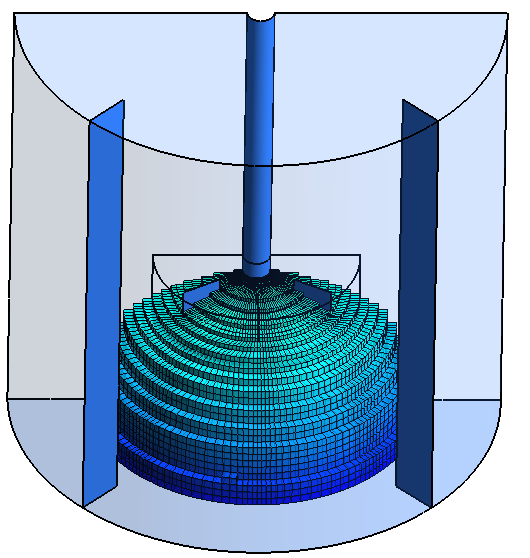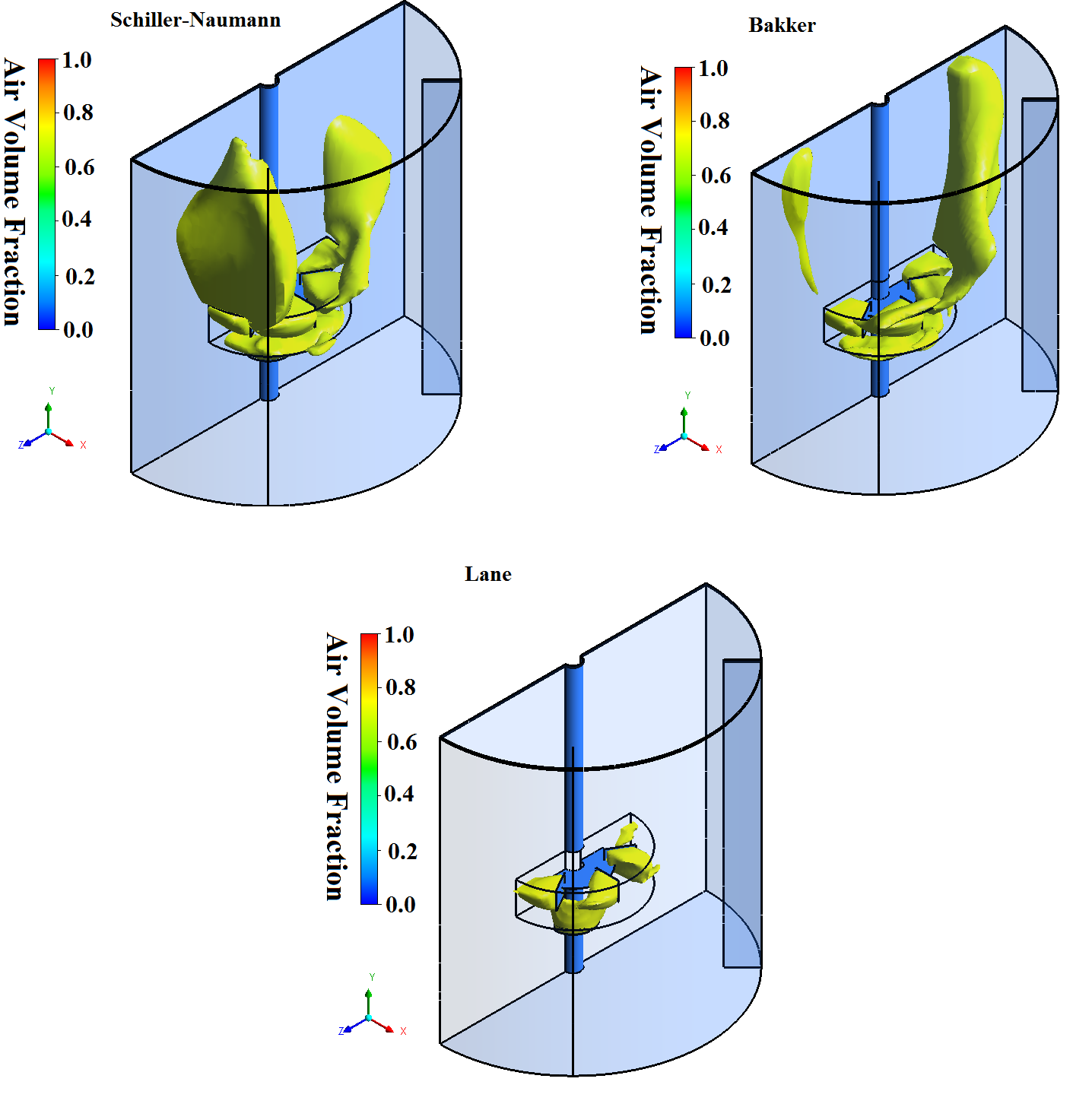In South Africa from 2010 to 2014, I developed a CFD model for prediction of flotation rate constants in a stirred flotation tank and validated against experimental data. The model incorporated local, time-varying values of the turbulent flow field into an existing kinetic flotation model. The geometry of the tank and the meshing is shown below.

The modeling stages includes single phase, multiphase simulations using Eulerian-Eulerian framework with drag force for the multiphase modeling. A parametric study on the available drag coefficients is performed showing that some drag models might lead to nonphysical representation of the flow characteristics. For instance the figure below depicts how the choice of drag coefficient formulations simulates the presence of air cavity.

The flotation sub-processes including collision, attachment and detachment between air bubbles and solid particles are also formulated and coded into the model to evaluate the recovery of valuable minerals. For example the following image illustrates the contour plots of collision rates under different rpms.

The main contribution of this work is that it provides a validated and optimized numerical methodology that predicts the flotation macro response (i.e., flotation rate constant) by integrating the significance of the hydrodynamic flow features into the flotation micro-processes.